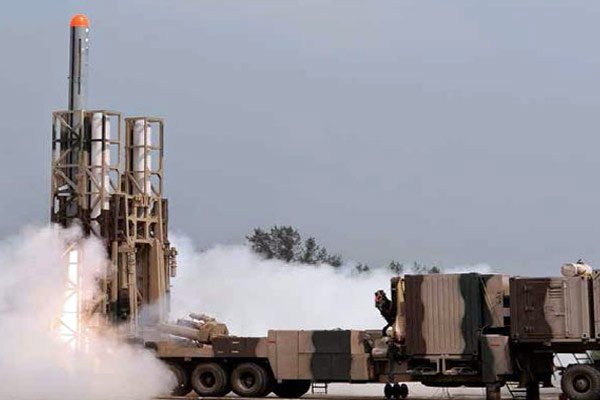New Delhi. India’s Defence Research and Development Organisation (DRDO) achieved yet another feat on November 7 last year with the successful test flight of ‘NIRBHAY’ – India’s first indigenously designed and developed Long Range Sub-Sonic Cruise Missile which can be deployed from multiple platforms.
It was successfully test fired from the Integrated Test Range (ITR), Chandipur, Odisha. The missile has the capability to loiter and cruise at 0.7 Mach, at altitudes as low as 100 m. The flight test achieved all the mission objectives completely from lift-off till the final splash, boosting the confidence of all scientists associated with the trial.
The missile took-off in the programmed manner and all critical operations viz. launch phase, booster deployment, engine start, wing deployment and other operational parameters demonstrated through autonomous way point navigation.
DRDO Successfully Conducts Interceptor Missile Test

Dr Abdul Kalam Island, Odisha. Ballistic Missile Defence (BMD) System of Defence Research and Development Organisation (DRDO) successfully scored a direct hit on incoming missile from Dr Abdul Kalam Island off the coast of Odisha December 28, 2017.
The interceptor directly hit the target at an altitude of about 15 km and destroyed it into fragments. The spectacular success puts India in the league of a very few select nations world over in the arena of critical defence technology.
Today’s direct interception is fourth in a row, where the missiles have scored a perfect hit on the incoming missile.
In text book style launch, the incoming ballistic missile was launched from LC-III complex of ITR, which followed the exact path of intended ballistic missile. Radars located at different stations far-off, acquired the target, tracked them and passed on to the Master Control Centre (MCC), which generated the expected trajectory of the target and alerted the interceptor missile.
The interceptor was launched from Dr A P J Abdul Kalam Island at appropriate time for interception, which was initially guided by the Inertial Navigational System and the radars. Later, the seeker took over after a proper lock on to the target and guided the missile towards the target. All the radars, Electro Optical and Telemetry Stations tracked both the missiles and recorded the final interception.
The event was witnessed by Vice Chief of Air Staff (VCAS) Air Marshal Sirish Deo and other senior officials of Armed Forces. Directors of DRDO laboratories namely RCI, ASL, LRDE and ITR reviewed the entire launch operations.
Scientific Advisor to the Defence Minister & Director General (Missiles & Strategic Systems) Dr G Sateesh Reddy present during the launch operation said that the repeat performance of the interception demonstrates the country’s professional capability in high technology oriented Ballistic Missile Defence (BMD).
Chairman DRDO & Secretary Department of Defence Research & Development Dr S Christopher congratulated the scientists behind the magnificent feat and said that the test paved the way for self-reliance.
Defence Minister Nirmala Sitharaman congratulated DRDO for elevating the country to few select nations having such BMD capability.
The guidance, control and navigation system of the missile is configured around the indigenously designed Ring Laser Gyroscope (RLG) and MEMS based Inertial Navigation System (INS) along with GPS system. The missile majestically cruised for total time duration of 50 minutes, achieving the range of 647 km. The missile was tracked with the help of ground based radars and other parameters were monitored by indigenous telemetry stations developed by DRDO.

Defence Minister Nirmala Sitharaman hailed the success of DRDO Scientists and complimented them for this inspired achievement. She was optimistic that this successful trial would take India to the select League of Nations for possessing this complex technology and sub-sonic cruise missile capability.
Chairman DRDO and Secretary Department of Defence (R&D) Dr S Christopher, DG (Aero) Dr CP Ramanarayanan, Director ADE, RCI , ITR and CEMILAC, along with other senior DRDO scientists and user representatives from Army witnessed the momentous launch and congratulated the team ‘NIRBHAY’ for making DRDO proud for the long awaited achievement.





